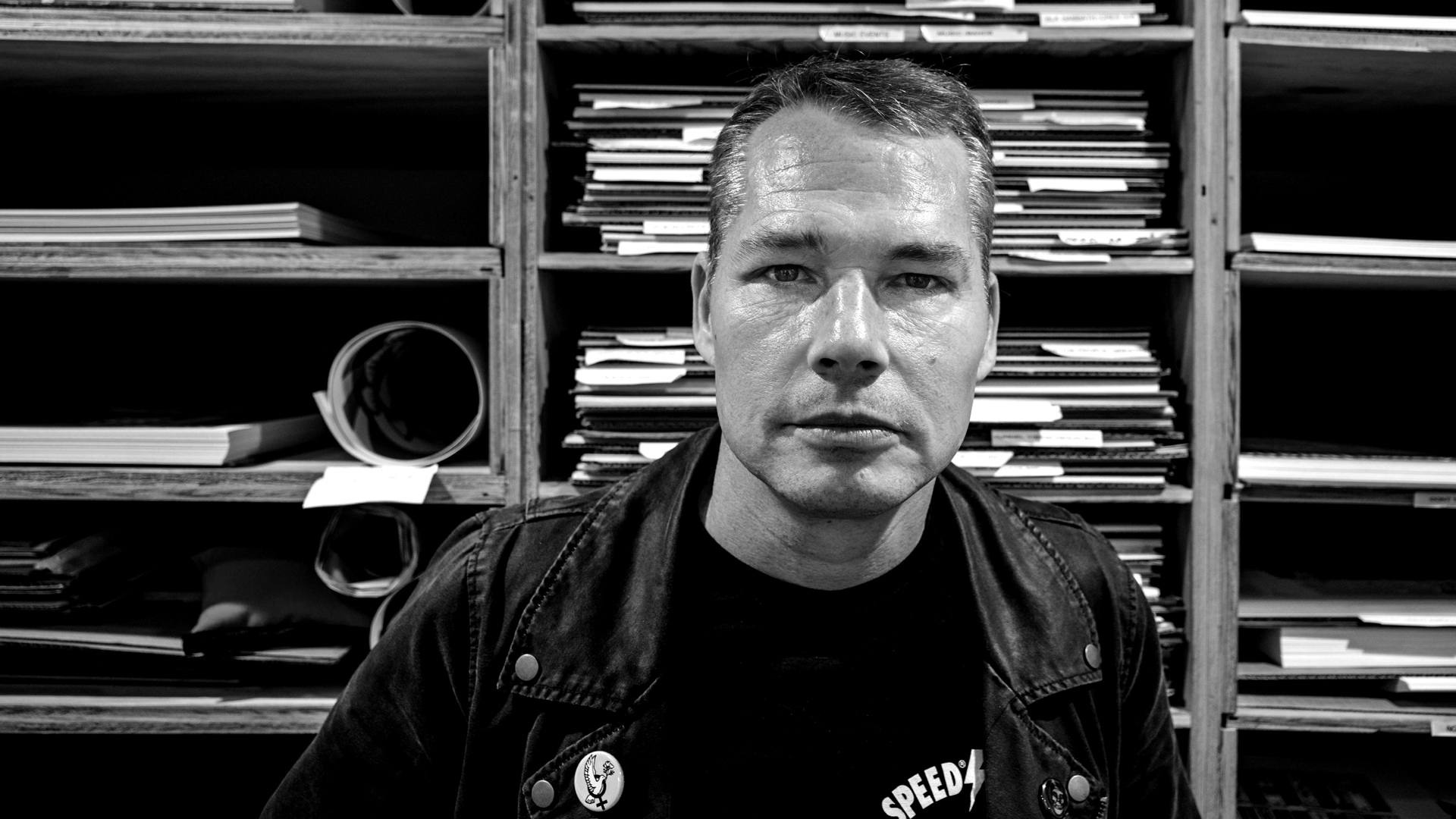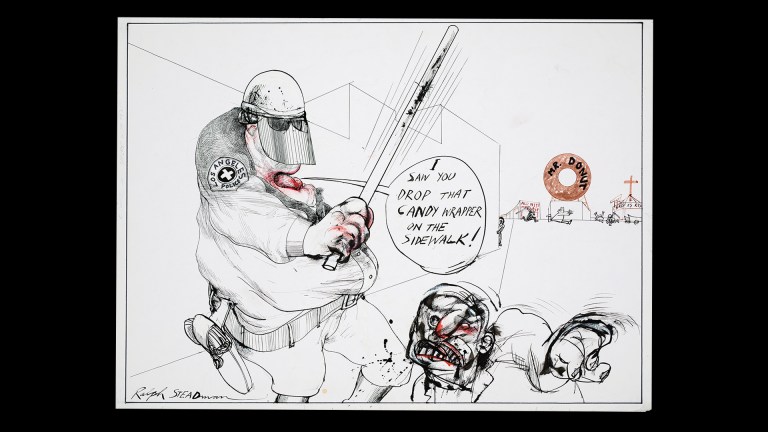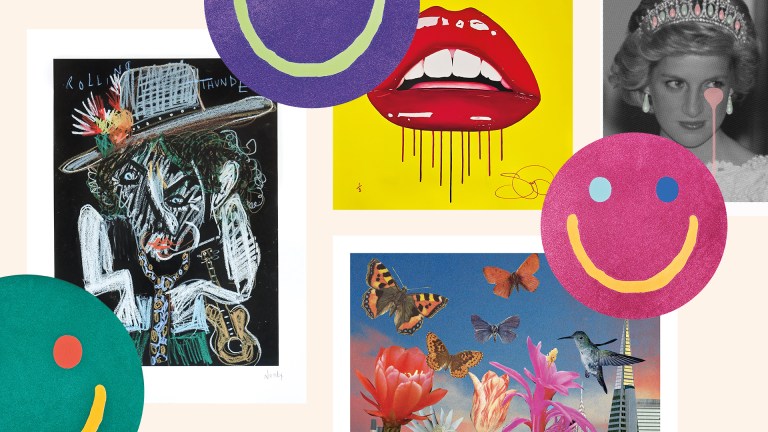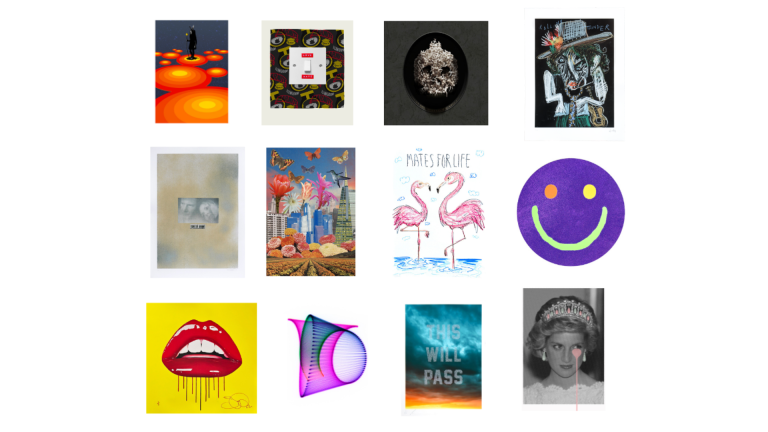I had the power to create something provocative basically from nothing.
At what point did you decide this was going to become your signature – and the drive behind something that is now a global campaign? Street art doyen Roger Gastman tells stories of long-distance road trips across America…
The sticker campaign started as an inside joke with a few friends, but as it seemed to intrigue people outside of my social and cultural circle, I became fascinated by the power of an unusual image in public space to disrupt the usual flow of consumer culture communication and question the control of public space. After a local newspaper ran a picture of the sticker a few times, I realised a lot of people were noticing the stickers and that I had the power to create something provocative basically from nothing. In reality, I was making $4.25 an hour at a skate shop, and yet this campaign was impacting local media enough to give it attention.
What motivated you in sticking up something that was irrelevant at the time?
The power of creating intrigue and encouraging people to analyse all imagery they’re confronted with, even if what I was putting up did not have an overt social message. I also got a thrill from the mischief of it. It was a fun bit of culture jamming, a kind of prank on uptight people who don’t like weeds growing through the sidewalk or seeing images they don’t know how to interpret.
Talk about repetition and obsession.
I’ve repeatedly told you I’m obsessed with things recurring… I’ll put it this way, people are busy and sometimes very slow to notice things, so repetition is essential in forcing something to register but then once it registers, the repetition gives it power because no one feels that patterns and repetition are haphazard, there must be something important behind it.
Advertising helps fund Big Issue’s mission to end poverty
What drives you to put up stickers quicker than they get weathered or are pulled down?
I still root for the underdog. I was one once, and I still am compared to a lot of the massive corporate forces that keep us oppressed. However, now I have resources to disseminate my images, but still remind people of the humble beginnings that only succeeded because of vigilance.
Investing your own money to put content out anonymously…
In the beginning, I was very poor, but I reinvested all my money into disseminating my imagery. Even though most people wouldn’t connect it directly with me as a person, I know that it was an investment in a concept that was worthwhile. As I’ve become more successful, it just means that I have more resources to push my art and the concepts behind Obey Giant further.
How many stickers do you think you have stuck up?
I know I’ve made in the millions of stickers at this point. I’ve probably put a few hundred thousand up myself.
Advertising helps fund Big Issue’s mission to end poverty
What countries don’t have Obey stickers?
I’m not sure. I hope none. I’ve travelled a lot and placed stickers in a lot of places myself, but what’s amazing about the sticker campaign is that it was viral, like a chain letter, before the internet. And the internet has only allowed it to reach more people. I’ve had people bring me bootleg shirts from Thailand and pictures of stickers or stencils from Africa. It’s absolutely amazing the ways in which an iconic image can be reproduced and shared.
Do you ever see yourself retiring?
If death is an out-of-body experience, I will see myself retiring.
Do you feel that stickers as a way of self-promo have lost their impact?
No, but I understand the question. Anything that becomes more common has the potential to lose a bit of its novelty and potency. Stickers are very fast and efficient, but with them being more common, they need to be visually striking and special.
Advertising helps fund Big Issue’s mission to end poverty
How many times have you been arrested?
Eighteen times, not including skateboarding and fireworks.
What more important – size or repetition?
They’re both important, which is why I make everything from small stickers to 25-storey murals and posters and stencils of various sizes in between.
What’s the oldest sticker still running?
It’s hard to say for sure, a few years ago I spotted one in New York on the bottom of a pole that was probably from the early Nineties because the stickers were slightly smaller back then, but I saw a sticker in Providence, Rhode Island, recently that I know is from 1995. Twenty-five years is a pretty good run for a sticker. I’m not precious about my street art, but it’s nice to see the old ones stick around.
Advertising helps fund Big Issue’s mission to end poverty
Interview: Louis Jensen @SprayingBricks









